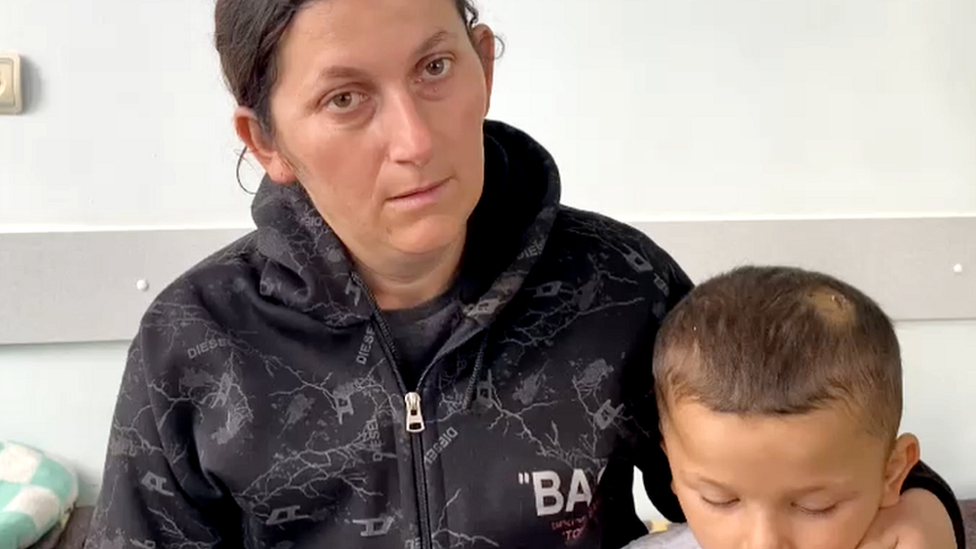Deserted Nagorno-Karabakh reveals aftermath of lightning-fast Armenian defeat
- Published
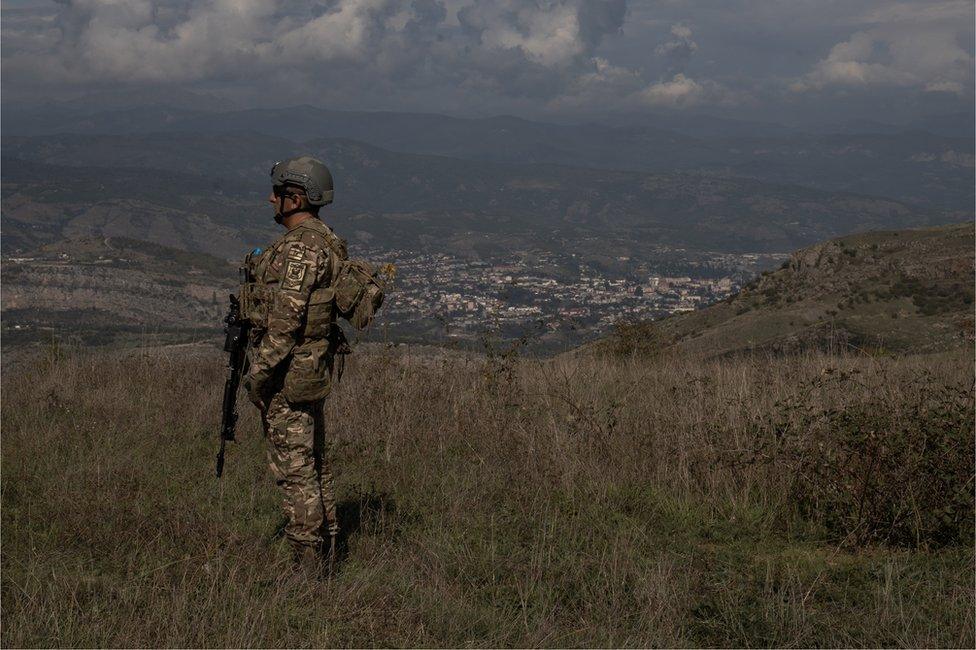
An Azerbaijani soldier stands at a retaken outpost overlooking the city of Khankendi, known as Stepanakert to Armenians, in the Nagorno-Karabakh region
At an Armenian outpost high in the mountains of Nagorno-Karabakh, a half-full cooking pot sat next to a half-eaten plate of food. There was a half-smoked cigarette and half a bread roll.
At another, smaller outpost farther along the former frontline, an Armenian log book sat abandoned in the grass. Its final entry was a perfunctory note that read, "Everything is under control."
The remnants at these outposts on Tuesday testified to the speed with which the Armenians had lost control two weeks earlier, during a lightning-fast military operation by Azerbaijan. The Azerbaijani forces seized the breakaway region in less than 24 hours, three decades after a bloody conflict that had left it in the hands of the Armenians.
Some 200 Azerbaijani soldiers lost their lives in the battle and about 500 were wounded, according to officials. But virtually nothing is known about how, or where, so many Azerbaijani soldiers died in such a short span of time, and on a tightly-controlled media tour of the region on Tuesday Azerbaijani military representatives did not elaborate.
A soldier who was put up as a spokesman, but declined to give his name or rank, said the Azerbaijanis had retaken this stretch of frontline with a mixture of precision artillery strikes and infantry, battling against an irregular Armenian force in possession of an armoured vehicle and two tanks, who used snipers to fire from their elevated position at the Azerbaijanis.
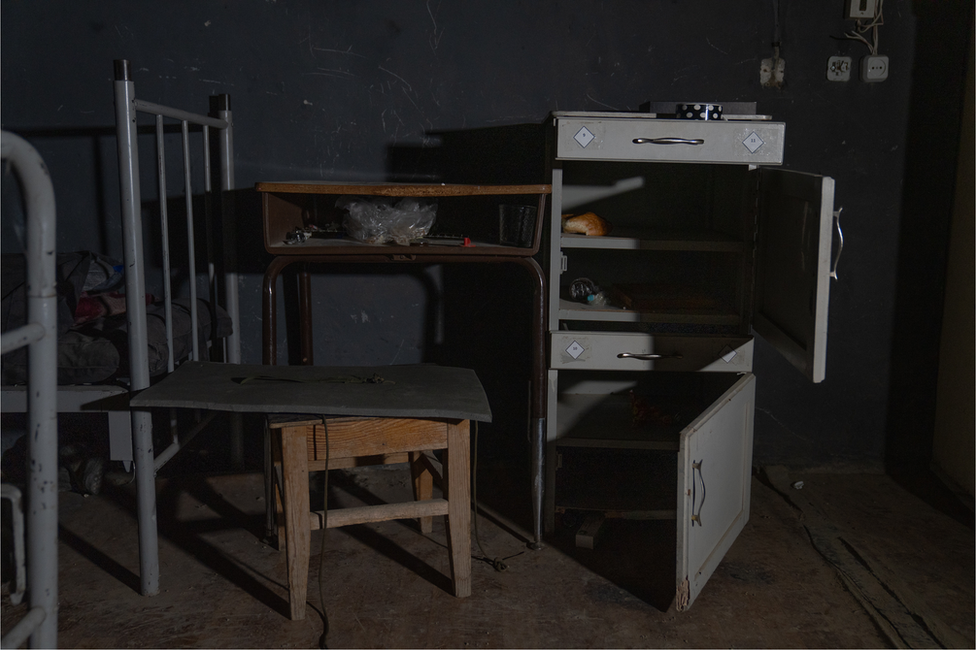
A cup of tea and half-eaten bread roll sit in a bunker at an Armenian outpost retaken by Azerbaijan during its offensive
Teams from the UN and Red Cross have been granted access to the regional capital, Khankendi, known by the Armenians as Stepanakert. But the BBC and other international media outlets were refused entry to the city, because the area is not yet secure, Azerbaijani officials said.
The few images that have emerged from Khankendi since the takeover show a ghost town, where possessions appear to have been abandoned in the streets as residents fled.
Nearly 120,000 Armenians, virtually the entire population, have now left Nagorno-Karabakh over the past two weeks. Along the Lachin corridor - the only route out of the region to Armenia - abandoned cars and possessions still litter the roadway, having broken down or run out of fuel in the miles-long queue to leave.
The Karabakh Armenians did not flee at gunpoint - there have been no confirmed reports of the exodus being prompted by the use of force against civilians.
"This was a limited, local, counter-terrorism action," Hikmet Hajiyev, foreign policy adviser to the Azerbaijani president, told the BBC. Azerbaijan "had only targeted legitimate military targets," he said, and avoided using heavy weapons like tanks in favour of light infantry.
Azerbaijan had also made it clear that they intended to peacefully reintegrate the civilian population, Hajiyev said, and the Karabakh Armenians who fled had "chosen freely" to leave.

Hikmet Hajiyev, foreign policy adviser to the president, in Baku on Tuesday. "This was a crucial moment to act," he said
But Armenian Prime Minister Nikol Pashinyan has accused the Azerbaijanis of ethnic cleansing, and others including the EU have condemned the Azerbaijani operation. For 10 months before its military action, Azerbaijan blockaded Nagorno-Karabakh, leaving the Armenian residents short of food, medicine and fuel.
And few have expressed surprise that the Karabakh Armenians would not want to be reintegrated into Azerbaijan, an autocratic state with which the Armenians have a long history of violent conflict.
"Ethnic cleansing does not need direct violence, just the threat of it," said Thomas de Waal, a senior fellow at Carnegie Europe and expert on the region.
"In this case, hundreds of Armenian soldiers were killed and the Azerbaijani army arrived and that was enough for the entire local population to flee," he said. "They didn't want to wait and see what would happen to them."
Ordinary civilians on both sides fled during every phase of the conflict in the 1990s as soon as opposing soldiers arrived, De Waal pointed out - driven by at least 100 years of distrust, even hatred, between the two populations. Azerbaijani children are taught in schools about a massacre carried out by the Armenians in 1993.
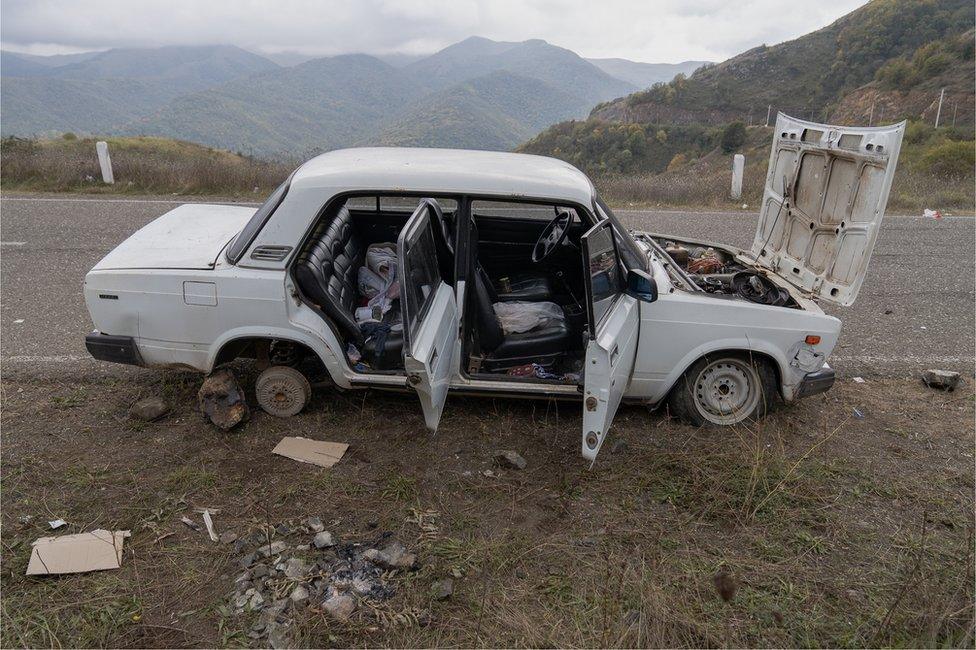
One of many abandoned cars that still litter the Lachin corridor - the only route out of Karabakh to Armenia
In the most recent clash, a 44-day war in 2020, about 7,000 military and 170 civilians were killed and many more wounded, ending in a Russian-brokered peace agreement that returned seven districts to Azerbaijan but left a key part of the region under Armenian control.
That clash was followed by a fervour of national celebration in Azerbaijan that was largely absent following the recent operation. Among the few fresh signs of a military clash, driving through the region this week, were the names of the military dead being read on local radio stations.
The recapture of the rest of Karabakh to Azerbaijani control was "more of a feeling of relief," said Zaur Mammadov, a telecoms engineer working in the city of Shusha. The 38-year-old had fled his home in Karabakh in 1993, at the age of nine, when the Armenians entered and pushed the Azerbaijanis out.
After the 2020 war, Mr Mammadov returned to his childhood home, which was still standing and had been inhabited by Armenian soldiers in the intervening years, he said. He is now hoping to purchase a nicer house in one of the new Azerbaijani settlements in the region.
"We waited 30 years for this moment," he said. "Now it is here."
Lala Aliyeva contributed to this report. Photographs by Joel Gunter.
- Published28 September 2023
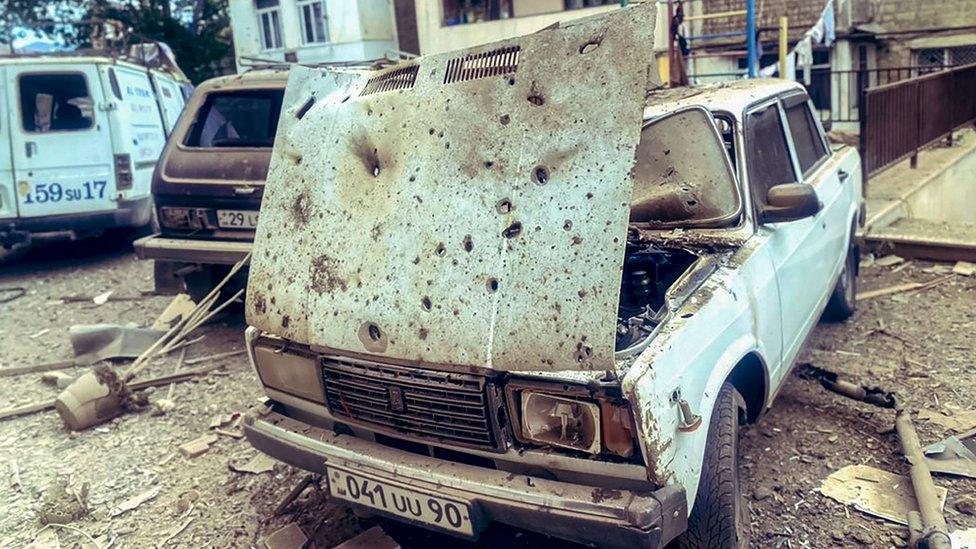
- Published30 September 2023
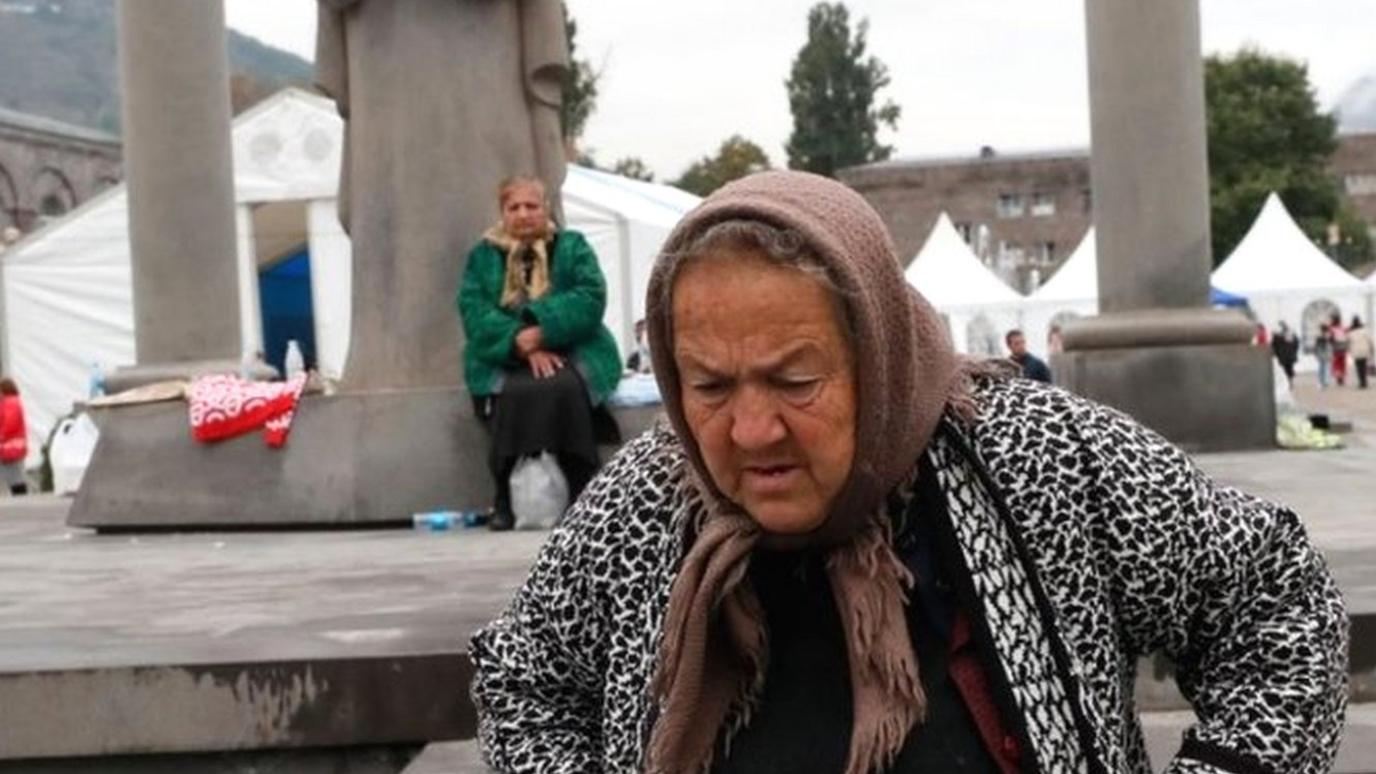
- Published27 September 2023
